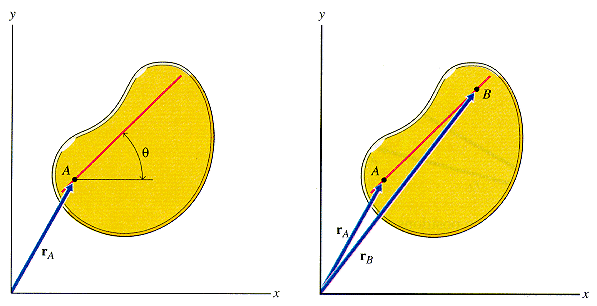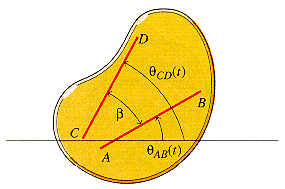
Planar Motion
Since each particle remains in a single plane, only the motion in a single plane needs to be considered. Generally, the plane containing the object's center of gravity, called the plane of motion, is used.

Here the motion of the entire body can be described by the motion of one point and the motion of one line, where the angle with a fixed axis or two points on the line are known.

Notice that the angular motion of lines in the plane of motion is the same for every straight line in the body. Every line (and the entire body) will move with the same angular velocity and angular acceleration.
| angular position | |
| angular velocity | |
| angular acceleration |
where
&
are defined as positive in the direction of increasing
.